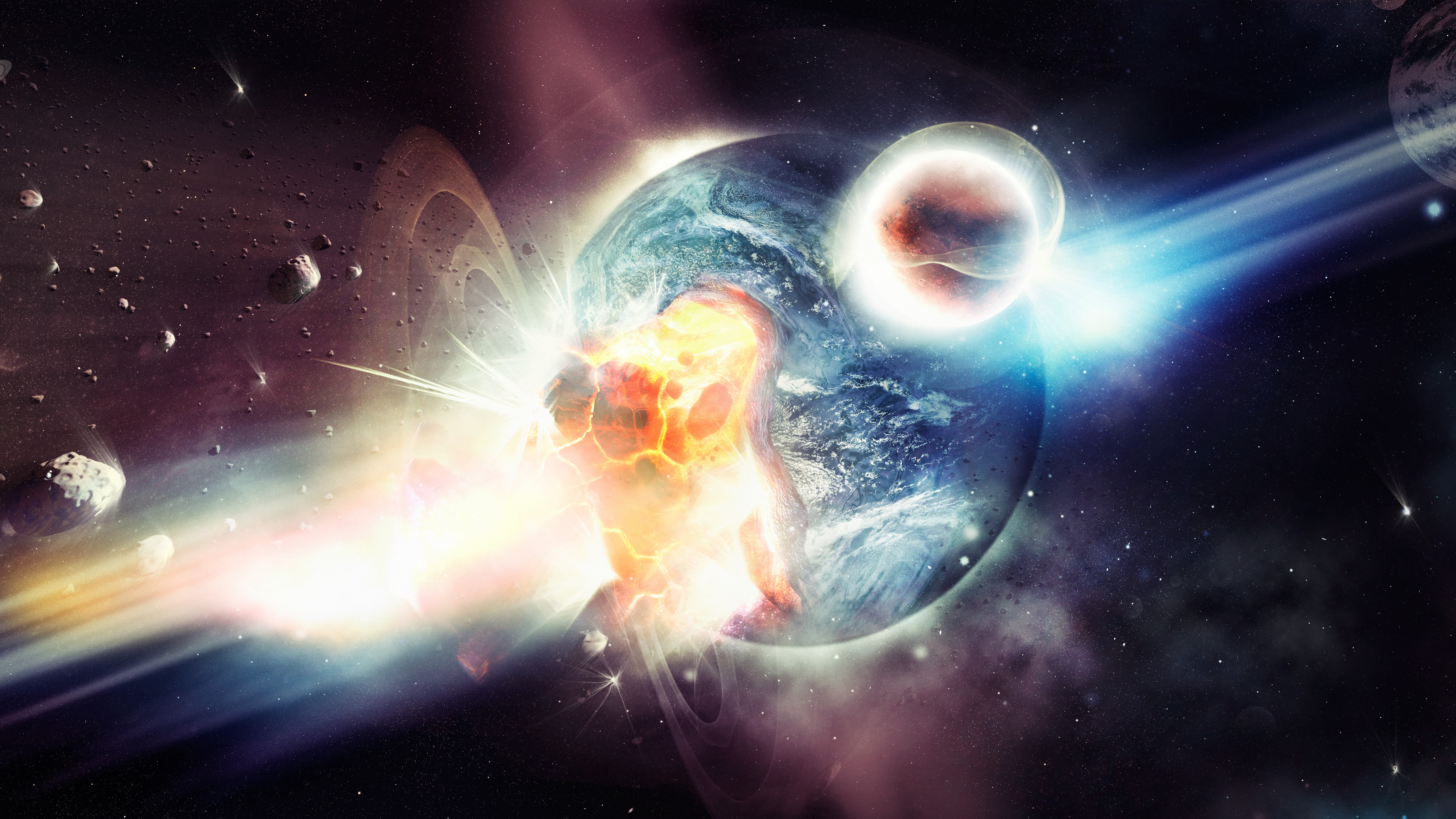Mystery blobs in Earth's mantle may be linked to ancient gold and platinum that arrived from space
The gold and platinum that came from giant space rocks should have sunk into Earth's core instead of rising to the crust. Scientists have now worked out how this happened — and it may explain some really weird blobs deep in our planet's mantle.

Scientists may have finally figured out why Earth's precious metals appear close to the surface, despite being so dense they should have sunk to the core. Turns out, they got stuck in gooey, half-melted rock after giant space rocks — some, perhaps, as large as the moon — smashed into Earth.
The abundance of precious metals near the surface has long puzzled researchers. Your platinum engagement ring, your grandmother's antique gold locket, the palladium that makes your car's catalytic converter work: None of them should exist.
Chemically speaking, all of these metals appear in too-large abundances on Earth, leading researchers to believe that they likely landed here during impacts with giant space rocks soon after Earth's formation. Even so, they should have sunk into Earth's core after crash-landing.
Now, in a new study, researchers have a solution to this conundrum: Despite their density, these metals can percolate through the mantle and become trapped in solidifying rock, keeping them close enough that they can eventually make their way back to Earth's surface. They may even be the reason for mysterious blobs called low-velocity shear zones that are found very deep in the mantle.
Related: Scientists discover ghost of ancient mega-plate that disappeared 20 million years ago
"As a result of these impacts, we can produce these large-scale regions that are slightly denser than surrounding material," study co-author Simone Marchi, a researcher at the Southwest Research Institute in Boulder, Colorado, told Live Science.
People didn’t really realize that the problem was so severe.
Simone Marchi
Gold, platinum, palladium, other platinum-group metals and the transition metal rhenium are all what scientists call "highly siderophile elements." This means they bind easily to iron. If, as scientists believe, these metals were carried to Earth via asteroids and planetoids in the chaos of the young solar system, they should have smashed through the crust and into the mantle, then sunk like a pebble hitting a pond until they reached the iron-rich core.
Sign up for the Live Science daily newsletter now
Get the world’s most fascinating discoveries delivered straight to your inbox.

That didn't happen. To find out why, Marchi and his co-author, geophysicist Jun Korenaga of Yale University, created simulations of these ancient impacts on the early Earth. They first discovered that getting these metals to stay away from the core was even harder than they'd expected.
"In the past, people had been glossing over this idea, [thinking] there has to be a way," Marchi said. "People didn’t really realize that the problem was so severe."
However, their simulations also revealed a solution to this problem. When an enormous space rock — perhaps close to the size of the moon — hit the early Earth, the collision would have obliterated the impactor and created an ocean of melty magma permeating deep into the mantle.
Under this magma ocean, though, would be a boundary area of half-melted, half-solid rock. The metals from the impactor would gradually percolate into this half-molten region, spreading them around. Instead of very dense pure metal that would sink directly toward the core, this region of metal-infused mantle would be only slightly denser than its surroundings. As it slowly sank into higher-pressure regions, it would solidify, trapping small fragments of metal before they could reach the core. Marchi and Korenaga reported their findings Oct. 9 in the journal Proceedings of the National Academy of Sciences.
From there, billions of years of churning and convection in the mantle brings the trapped metals to the crust, within reach of human mining operations. Voila — the materials needed for jewelry and electronics are now conveniently located.
It's possible these metal-rich blobs of mantle are still visible today in images of the mantle that scientists reconstruct from earthquake waves. Large low-velocity shear provinces, or LLSVPs, are areas of the mantle where shear waves from earthquakes move oddly slowly. It's evident there is some difference in the mantle rock in these regions, Marchi said, but scientists aren't sure what.
One possibility is that the difference is in the density, and that LLSVPs are the remnants of the ancient impacts that brought gold, platinum, and other metals to Earth.
One next step, Marchi said, might be to simulate similar impacts on a young Mars or Venus. "Those planets are very different from Earth," he said. "So it might be interesting and important to see how this process would work for these other terrestrial planets."

Stephanie Pappas is a contributing writer for Live Science, covering topics ranging from geoscience to archaeology to the human brain and behavior. She was previously a senior writer for Live Science but is now a freelancer based in Denver, Colorado, and regularly contributes to Scientific American and The Monitor, the monthly magazine of the American Psychological Association. Stephanie received a bachelor's degree in psychology from the University of South Carolina and a graduate certificate in science communication from the University of California, Santa Cruz.









